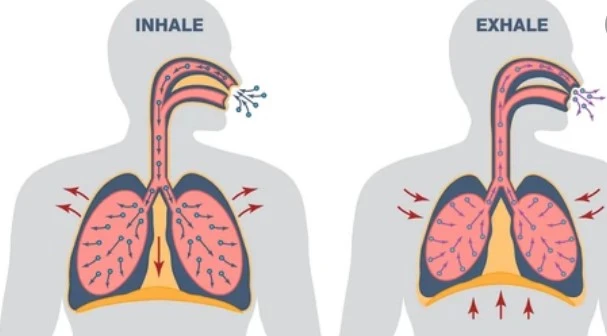Are you ready to try something new in relaxation? Imagine feeling not just calm, but also refreshed and energized. Today, we are exploring a special breathing technique called Shitali Pranayama, which might change how you think about relaxing.
You might think relaxation means just calming down or feeling less stressed. But Shitali Pranayama can do much more. It is like a cool breeze that not only calms your mind but also cools your body, wakes up your senses, and makes you feel better overall.
In a world full of stress, sheetali pranayama offers a new way to relax. It’s different from what you might be used to, but it could be just what you need. Join us as we learn about this ancient practice, and discover how it can bring real health benefits to your life. Get ready for a fresh start in feeling good with Shitali Pranayama.
Contents
What is Shitali Pranayama?
Shitali Pranayama is a breathing technique rooted in the ancient practice of yoga “Shitali “comes from the Sanskrit word meaning “cooling,” reflecting the primary effect of this pranayama. In Shitali Pranayama, the breath is drawn in through a curled tongue, creating a cooling sensation as the air passes through the mouth and into the body. This technique is believed to have a cooling effect not only on the physical body but also on the mind and emotions.
Shitali Pranayama serves as an effective method to lower body temperature, offering immense relief, especially in hot weather or after strenuous physical activity. Moreover, this practice holds profound significance in calming the nervous system, aiding in the management of stress, anxiety, and anger. Incorporating Shitali Pranayama into your Chakra Yoga routine can enhance your overall experience by promoting a sense of balance and tranquility within the body and mind
Sheetali Pranayama Benefits

Sheetali Pranayama, another cooling breath practice similar to Shitali Pranayama, offers a range of benefits for both the body and mind. Here are some of the key advantages:
- Cooling the Body: The primary benefit of Sheetali Pranayama is its ability to lower body temperature, making it particularly useful during hot weather or in situations where one feels overheated.
- Calming the Nervous System: Sheetali Pranayama has a calming effect on the nervous system, helping to reduce stress, anxiety, and agitation. By focusing on slow, deep breaths, practitioners can induce a state of relaxation and tranquility.
- Improving Digestion: This pranayama stimulates the digestive organs, promoting healthy digestion and metabolism. It can help alleviate digestive issues such as acidity, indigestion, and bloating.
- Enhancing Lung Function: Sheetali Pranayama involves deep breathing exercises that expand the lungs and increase oxygen intake. Regular practice can improve lung capacity and respiratory efficiency.
- Balancing Body Temperature: In addition to cooling the body when it is overheated, Sheetali Pranayama can also help regulate body temperature in cold conditions by promoting a sense of internal warmth and balance.
Shitali Pranayama Steps

- Preparation:
- Find a quiet and comfortable place to sit in a relaxed posture, either cross-legged on the floor or a chair with your feet flat on the ground.
- Ensure your spine is straight, shoulders are relaxed, and hands are resting comfortably on your knees or thighs.
- Close your eyes gently or maintain a soft gaze, whichever feels more comfortable for you.
- Tongue Positioning:
- Curl your tongue into a “U” shape, with the edges of the tongue touching the palate.
- If you’re unable to curl your tongue, you can simply place the tip of your tongue against the roof of your mouth, just behind your front teeth.
- Inhalation:
- Take a slow, deep breath in through your mouth, drawing the air in through the space created by the curled tongue.
- Focus on filling your lungs with cool air, expanding your chest and abdomen as you inhale.
- Hold the Breath:
- Once your lungs are fully inflated, hold your breath for a comfortable duration. Beginners may start with a short hold, gradually increasing the duration as they become more comfortable with the practice.
- Exhalation:
- Exhale slowly and steadily through your nostrils, releasing the breath with control and awareness.
- As you exhale, imagine releasing any tension or stress from your body and mind, allowing yourself to relax more deeply with each breath out.
- Repeat:
- Repeat the inhalation cycle, hold, and exhalation for several rounds, maintaining a steady and rhythmic pace.
- Start with 5-10 rounds of Shitali Pranayama and gradually increase the number of rounds as you become more proficient and comfortable with the practice.
- Closing:
- After completing your rounds of Shitali Pranayama, take a few moments to observe the effects of the practice on your body, breath, and mind.
- When you are ready, gently bring your awareness back to the present moment and slowly open your eyes if they were closed.
Shitali Pranayama into Daily Life
- Morning Ritual: Start your day with a few rounds of Shitali Pranayama to set a positive tone for the hours ahead in your Chakra Yoga practice. Sit comfortably and take a few deep breaths through the curled tongue, welcoming in a sense of calm and clarity to kickstart your journey of balancing the 4 types of Pratyahara.
- Midday Refresh: Take a brief break during the middle of your day to practice Shitali Pranayama and rejuvenate your energy. Whether you’re feeling overwhelmed at work or fatigued from daily activities, a few moments of conscious breathing can help you reset and recharge.
- Stress Management: Whenever you encounter stressful situations throughout the day, turn to Shitali Pranayama as a tool for managing your response. By practicing this calming breath technique, you can cultivate a sense of resilience and equanimity in the face of challenges.
- Mindful Eating: Before meals, take a moment to practice Shitali Pranayama to prepare your body and mind for nourishment. This can help you become more mindful of your eating habits, promote better digestion, and enhance your enjoyment of the food you consume.
- Bedtime Routine: Wind down in the evening with a gentle practice of Shitali Pranayama to ease tension and promote relaxation before bedtime. Incorporate this soothing breathwork into your nighttime routine to signal to your body that it’s time to unwind and prepare for restorative sleep.
- Transitions: Use Shitali Pranayama as a bridge between different activities or transitions throughout your day. Whether you’re moving from work to leisure, or from one task to another, taking a few moments to pause and breathe can help you transition more smoothly and mindfully.
- Gratitude Practice: Infuse your Shitali Pranayama practice with feelings of gratitude and appreciation for the gift of breath and life. As you inhale the cool air, reflect on the abundance and blessings present in your life, fostering a sense of contentment and joy.
Conclusion
As we come to the end of our journey exploring Sheetali Pranayama, it is evident that this ancient cooling pranayama offers significant benefits for our well-being. By following its simple steps and experiencing its effects, we have discovered a valuable tool for improving our overall health. Through the cooling breaths of Sheetali Pranayama, we have found a peaceful refuge amidst life’s challenges. This practice teaches us how to relieve stress, lower body temperature, and calm our minds. By integrating Sheetali Pranayama into our daily routines, we foster resilience, equilibrium, and mindfulness in our lives. As we move forward, let’s carry the wisdom of Shitali Pranayama with us, embracing its transformative power to guide us towards increased tranquility, vitality, and wholeness.
